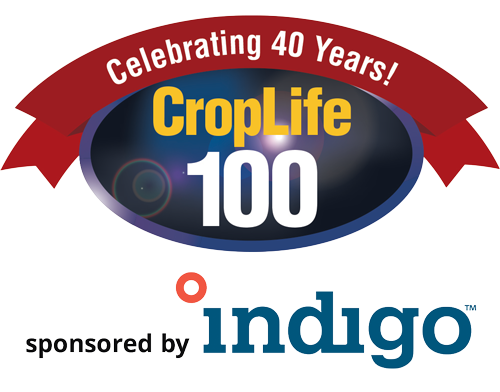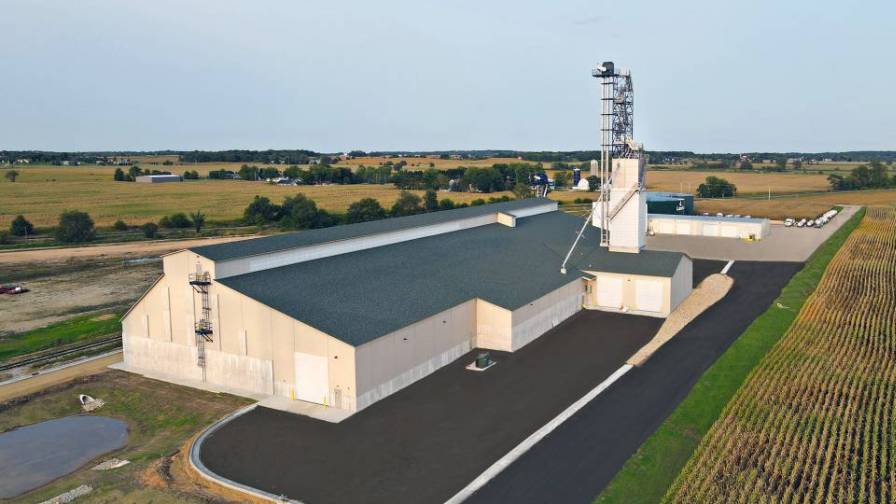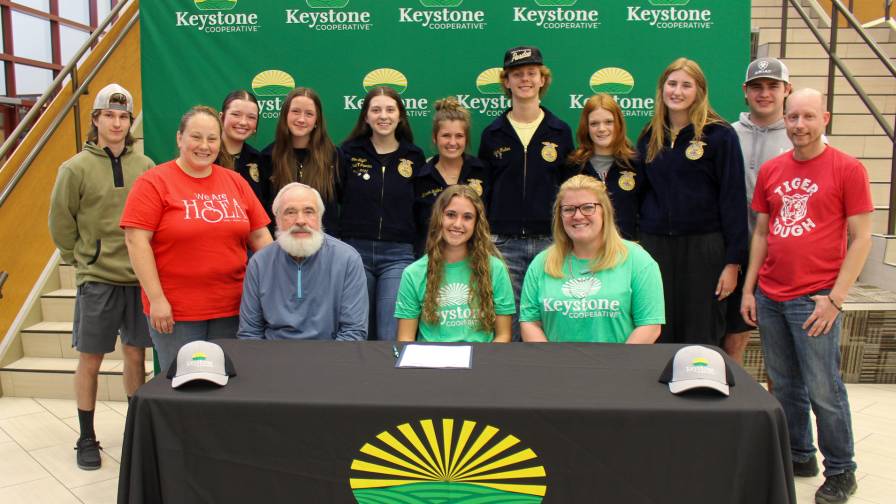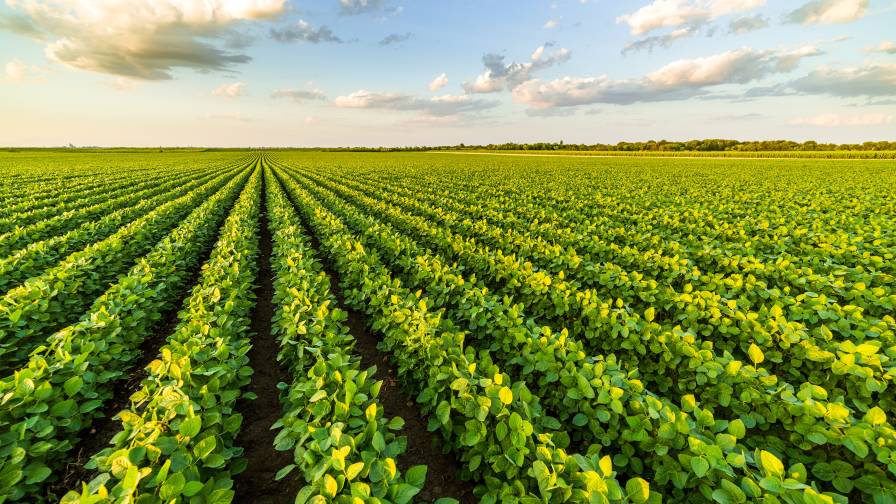The Big Seven of the CropLife 100: The Evolution of America’s Largest Ag Retailers

Editor’s Note: The role of the ag retailer and trusted advisor to farmers across the U.S. is constantly changing — never more so than in the last three years. As we settle into a “new normal” complete with new market dynamics, the long-held practices are gone for good. As the linchpin between grower-customer and the suppliers of the sophisticated tools they use, ag retailers in the U.S. are essential to pushing crop production to the next level. In recognizing 40 years of the CropLife 100 ag retail ranking program, our editors engaged with numerous CropLife 100 ag retailers at the National, Co-op, and Independent levels to unearth opportunities and concerns in today’s modern agricultural market. As such, we are featuring a variety of stories throughout the year focusing on ag retailers that are celebrating milestones, exploring how they have managed to survive and thrive where others have not. In the final installment of our three-part series looking at the three types of ag retailers that make up the CropLife 100 listings, we shine the spotlight on the Nationals.
In every industry, there are always a handful of companies that make up the top tier. These entities tend to dominate the rest of the field — either by long-standing reputation or financially. Typically, they are called by various nicknames among market watchers — the giants, the nationals, or simply “the bigs.”
Since the start of the 2000s, the ag retail industry has also birthed its own host of bigs. For long-time followers of the annual CropLife 100, their names are likely very familiar — CHS, GreenPoint Ag, Wilbur-Ellis, GROWMARK, Simplot, Nutrien, and Helena Agri-Enterprises. Collectively, these “Big Seven” companies account for almost 70% of all crop inputs/services provided to grower-customers annually and do business either in large swaths of geographic territories or, in a few cases, nationally across the lower 48 states. Combined, the number of retail outlets doing business under these seven company names represent 59% of all of the facilities tracked in the annual CropLife 100 listing.
However, this wasn’t always the case. When CropLife magazine’s predecessor publication, Farm Chemicals, first compiled its then Top 90 Ag Retailers list in 1984 (in honor of the magazine’s 90th anniversary), the top tier of companies at that time only topped the $80 million mark. Furthermore, virtually all of the company names on that initial CropLife 100 were different than today, with such entities as Agway and Agri-Basics listed in the top sales positions that year.
A Throwback to the 1980s
How did such a massive concentration of companies/industry wealth occur over the past 40 years? According to representatives of the Big Seven themselves, the tale is both parts complicated and straightforward — with many aspects of Business 101 thrown in for good measure.
To understand the evolution of today’s Big Seven era, Joey Caldwell, Senior Vice President, Retail at GreenPoint Ag, says it helps to realize what the agricultural world looked like back in the 1980s.
“In the 1980s, the ag retail industry was populated by many smaller, independent companies and some larger cooperatives,” says Caldwell. “You didn’t have many scaled businesses at that time like you do in today’s market. Even the big names of today were different. Helena was a different animal, business-wise. And Nutrien was split into many retailers doing business under different names.”
In addition, he adds, the early 1980s were something of a “dark time” for the entire agricultural industry.
“This was a rough patch for everyone in ag,” says Caldwell. “Growers were dealing with a bunch of serious problems — bad weather and high inflation among them. Many of them didn’t survive these years, and that definitely hurt many of the ag retailers, too.”
Over the next decade or so, market conditions in agriculture stabilized and ag retailers continued to rebuild their businesses accordingly. But by the early 2000s, says Caldwell, market forces came to the forefront that began pressuring ag retailers to alter or expand their business goals.
“The rise of the biggest ag retailers came about because of a whole new competitive landscape in the industry, and technology,” he says.
In terms of technology, this included developments both within the agricultural marketplace — such as the introduction of biotech crops and precision agriculture in the mid-1990s — to the more widespread world, such as the debut of the internet and online commerce.
“Technology made operations simpler for ag retailers and their competitors, putting them on more even ground overall,” says Caldwell. “This then set the stage for consolidation.”
Bigger Is Better
In the business world, it’s a basic fact — if your chosen marketplace is flat, the only way to grow your company is through consolidation. Buying up smaller competitors not only eliminates market competition but, in theory, adds scale and scope to your own operation. This allows for more market growth going forward.
Among today’s Big Seven ag retailers, consolidation has typically taken on huge proportions. It started in 2006, when Nutrien (then known by the Agrium name) acquired Royster-Clark, which had been a perpetual Top 10 CropLife 100 ag retailer for decades. In 2008, Agrium acquired another large ag retailer, United Agri Products. Combined, these two purchases expanded the company’s ag retail footprint by almost 600 locations. Also with these acquisitions, Agrium united all of its ag retailers under a single name: Crop Production Services (CPS). In 2018, CPS formally rebranded as Nutrien.
Simplot Grower Solutions took a similar approach to growing its business. For years, the Boise, ID-based company had steadily grown its business across the Western U.S. However, in 2019, when another big ag retail company, Pinnacle, became available for purchase, Simplot decided to act, completing the acquisition by the start of 2020. With this move, the company vaulted into the Top 3 among all ag retailers in terms of overall sales.

GreenPoint Ag was formed in September 2020, when three organizations — Agri-AFC, Tennessee Farmers Cooperative, and legacy GreenPoint Ag — united their wholesale and retail outlets under the GreenPoint Ag banner.
As for the newest member of the Big Seven — GreenPoint Ag — the consolidation path looked a bit different than those followed by Nutrien and Simplot. The company was formed in September 2020, when three organizations — Agri-AFC, Tennessee Farmers Cooperative, and legacy GreenPoint Ag — united their wholesale and retail outlets under the GreenPoint Ag banner. In 2022, Tri-County Farmers Association combined operations with the new GreenPoint Ag.
“I think we are a microcosm of the consolidation that’s taken place in the industry,” says Jeff Blair, President/CEO at GreenPoint Ag. “Over the past 40 years, some big ag retailers have been able to stay relatively stable. For others, it’s been this massive series of consolidations that have continued to this day. But GreenPoint Ag is an evolution of all this. We’ve embraced the concept of change that has guided the industry, but we’ve taken more of a partnership approach with the companies we’ve brought together.”
A Bright Future
Despite their size compared with the rest of the ag retail marketplace, Blair thinks that bigger companies such as his need to remember the basic principle that has shaped the entire industry since its inception — service — to remain successful.
“The key differentiation for retailers is service, not just the products being offered,” he says. “Ag retailers need to recognize this to grow their businesses. If we are simply a ‘box’ where growers can pick stuff up, we are just Farmers Business Network with a crappier website!”
Eric Cowling, President/CEO at Helena Agri-Enterprises, also sees a bright future for larger ag retailers. Speaking at the company’s Evolve Event in mid-July, he reminded employees and guests that they always should strive to “manage the controllables” in their operations.
Amy Winstead, Vice President of Retail Operations at GreenPoint Ag, agrees wholeheartedly with the future outlook for “the bigs” — especially hers.
“I think we are in a really unique spot because we have a really good balance of history, tradition, service, and new growth with innovation and technology,” says Winstead. “We are very unique because we have all those pieces to bring together, with an incredible amount of resources from our partners to tap into as a company.”
Big Ambitions
The consolidation and M&A activity that has fueled the growth of national ag retailers in the decades since the launch of the CropLife 100 reflects both the changing role and reach of this retailer segment as well as the dramatic changes happening within agriculture.
Rob Clayton, SVP, Retail North America at Nutrien Ag Solutions, says the focus today is “how do we make our growers more profitable, and do that in a sustainable way?”
Feeding a growing world population with fewer inputs is not easily attainable.
“It might seem strange for a company like Nutrien with our parentage, in addition to being one of the largest fertilizer producers in the world, to try and figure out how to use less fertilizer,” he says.
“However, it’s a finite resource. It’s right for the planet. And lastly, we’ve got to assure that our growers are not only sustainable, but profitable, because we can’t feed the world with broke farmers.”
Sustainability is hardly a new concept, adds Clayton.
“We’ve been trying to do more with less for many years, from the advent of plant genetics, new chemistries, safer chemistries, it’s a natural progression,” he says. “Sustainability as defined by Nutrien Ag Solutions is making sure we can feed the world forever while farmers can produce food in a truly renewable way.”
In order to achieve such lofty goals, “You have to be big, and you have to make big bets sometimes,” says Clayton, who acknowledges that while there will be failures along the way, that’s the requirement for moving the needle on sustainability and profitability.

Nutrien’s growth and expansion over the years gives the company unique benefits in the marketplace. Photo: Nutrien Ag Solutions
From a business perspective: “Consolidation is actually resulting in fewer customers. The only way that we can grow our business is by growing the business of our North American farmers, and indeed, our global farmers, and make them all more profitable. We have to create value for them first, then we will get our share of the value.”
Nutrien’s growth and expansion over the years gives the company unique benefits in the marketplace.
“A significant turning point occurred in 2018 with the merger of Agrium and PotashCorp. This really supercharged the business into becoming a global player on the NPK side of the business [and resulted in the formation of Nutrien that same year],” explains Clayton. “In 2019, in Australia, where I’m from, we bought Ruralco, which essentially doubled the size of our business in that market. Then the following year we invested nearly $2 billion in Brazil.”
Today, Nutrien “is the only true global ag retailer,” he says. With operations in both the northern and southern hemispheres, “we get insight into what’s happening both in the chemistry world and the fertilizer world, especially with some of the leading advancements in Brazil. We also get information about different pests, different practices. Global practices spread through our business very quickly. We’re not waiting for someone else to tell us what’s going on in other parts of the planet when it comes to technology.”
Clayton sees a greater sense of responsibility for an industry leader like Nutrien.
The sheer size of the company allows the company “to make billion dollar investments and really drive our industry forward. That’s the part I love,” he says. “Just because you’re big doesn’t mean anything unless you do something big.”







